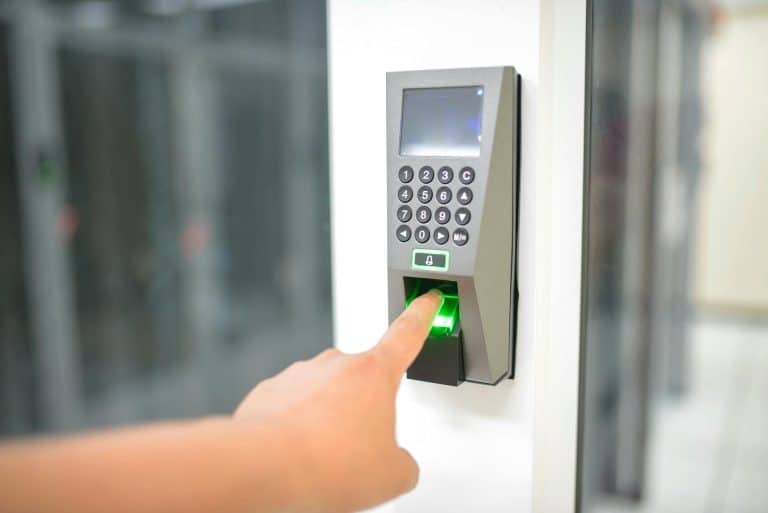Plastic access panels are lightweight, moisture-resistant, and cost-effective solutions for accessing concealed plumbing and electrical systems in walls and ceilings. They balance functionality, aesthetics, and affordability, especially when quick maintenance access is essential.
Unlike heavier drywall or metal alternatives, plastic access panels are easy to install, offer long-term durability, and require minimal upkeep.
This post explains the benefits of plastic drywall access panels, highlighting where they work best and explaining why they’re a great choice for plumbing and electrical access.
What Are Plastic Access Panels and How Do They Compare to Drywall Panels?
Plastic access panels are prefabricated openings made of durable, high-impact plastic. Their core function is to allow quick entry to hidden plumbing valves, electrical junction boxes, and ceiling utilities.
Unlike drywall access panels, which require heavier cutting and framing, plastic panels can be snapped or screwed into place with minimal labor.
For architects, this means greater design flexibility without compromising aesthetics. Plastic access doors reduce downtime for facility managers and ensure maintenance crews can easily perform inspections or repairs.
They are more lightweight and naturally resistant to moisture and corrosion than metal panels.
What Are the Key Benefits of Plastic Access Panels?
Plastic access panels’ durability, affordability, and ease of use make them ideal for facility managers overseeing maintenance and architects focused on design.
Ease of Installation
Plastic access panels are lightweight because they are made from molded, high-strength polymers. This makes them easier to transport and install than other access doors and panels.
The installation process is straightforward. Most models feature a simple, snap-in design that requires minimal tools. There’s no need for complicated framing or screws; the panel is simply cut to size and fit into the opening.
Easy install translates into faster project timelines and lower labor costs. In retrofit projects, panels can be added quickly without major disruption to existing walls or ceilings.
Moisture and Corrosion Resistance
One of the most significant benefits of plastic access panels is their inherent moisture resistance. Unlike steel or untreated drywall panels, plastic is non-porous and will not rust, swell, or deteriorate when exposed to moisture.
This makes them ideal for bathrooms, kitchens, utility rooms, or mechanical spaces where plumbing systems run. Plastic panels maintain performance over time without requiring anti-rust treatments or repainting.
Cost-Effectiveness
Plastic access panels are among the most cost-effective options for plumbing and electrical access. They generally cost less upfront, and their long service life reduces replacement costs.
Maintenance costs are minimal since they don’t corrode or require repainting.
These savings add up significantly for large residential or commercial builds that need multiple access points.
Versatility in Design
Most plastic access panels have a flush design and can be painted to match surrounding surfaces. This allows them to blend seamlessly into walls and ceilings instead of standing out.
This versatility means they can provide easy access without compromising interior finishes. The clean design ensures a minimalistic look, which is especially important in spaces where aesthetics are a priority, such as in lobbies, hallways, and residential homes.
Beyond looks, the functional design of these panels is a key maintenance benefit. The simple latch, push-to-open, or removable mechanism allows for quick entry for plumbing access and electrical door maintenance.
Ease of Maintenance
Like other access points, plastic panels provide safe and reliable entry to plumbing and electrical systems. They are designed for quick inspections, valve shut-offs, wiring adjustments, and routine maintenance.
For property owners, this means less wall and ceiling damage during emergency repairs or inspections. Instead of cutting into drywall, technical teams can open a panel to reach the necessary components instantly.
Durability and Longevity
While not as sturdy as steel or aluminum, plastic access panels are surprisingly strong and can withstand repeated use. Made from high-impact ABS plastic or other engineered polymers, they resist chipping, denting, and scratching, a common problem with painted metal panels.
Unlike drywall cutouts or makeshift panels, they retain their shape and function across years of operation. Moreover, this durability comes without the weight of traditional metal panels.
The result is lower replacement frequency and long-term performance in residential or commercial projects with heavy maintenance demands.
How Do You Choose the Right Plastic Access Panel?
Assess the Application and Location
For areas with high moisture, such as near pipes or water heaters, choose a panel with a secure, moisture-resistant seal. For electrical access, ensure the panel’s size is adequate to provide safe and easy access to junction boxes and wiring without hindrance.
Verify that the panel is suitable for both vertical and horizontal installation, especially if you need to maintain a uniform look throughout the building.
Consider Size and Fit
Measure the rough opening in the wall or ceiling to determine the correct panel size for a perfect fit.
Frame or no frame? Some panels have a built-in frame for added rigidity, while others are frameless and rely on friction-fit tabs.
Evaluate Material and Durability
Look for high-impact polymers like ABS (Acrylonitrile Butadiene Styrene) plastic, which offers excellent resistance to chipping, denting, and scratches.
For exterior use, check for UV resistance. If the panel will be exposed to direct sunlight, ensure it’s made from a UV-stabilized material to prevent discoloration or brittleness over time.
Examine Installation Features
For ease of installation, look for panels with simple, snap-in designs that do not require complex framing or screws. This saves time and labor costs.
Choose a panel with a simple latch or push-to-open mechanism for quick, tool-free access. Avoid complex locks unless security is a primary concern.
Prioritize Aesthetics
Select a panel that sits flush with the drywall surface for a clean, seamless appearance. Confirm the panel is paintable for a discreet finish. Most plastic panels are available in white or off-white, which works well in most applications, even without painting.
Check for Fire Ratings
Most standard plastic panels are not fire-resistant. So, for applications in fire-rated walls, choose a UL-rated fire-resistant access panel or one with other certifications to meet building codes.
Conclusion
For plumbing and electrical system access, plastic access panels provide a durable, easy-to-install, moisture-resistant, and visually adaptable solution. They make long-term access reliable without compromising aesthetics, all at a fraction of the price.
Property owners benefit from reduced maintenance costs, quicker repairs, and minimized downtime. These panels also offer flexibility in design and seamless integration into modern interiors.













